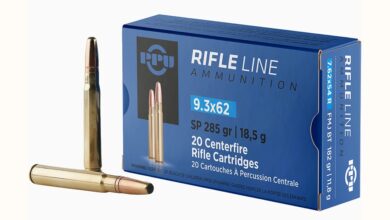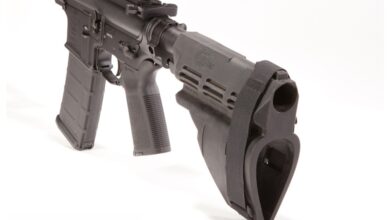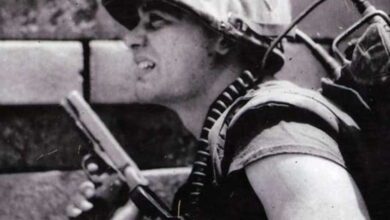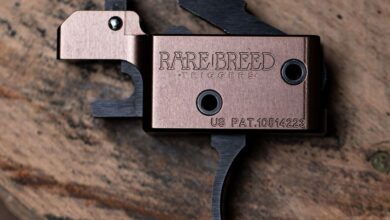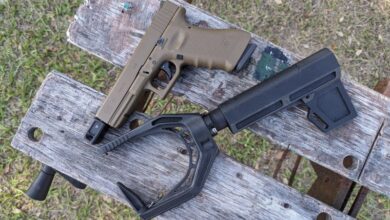How To Sell On GunBroker: The Basics
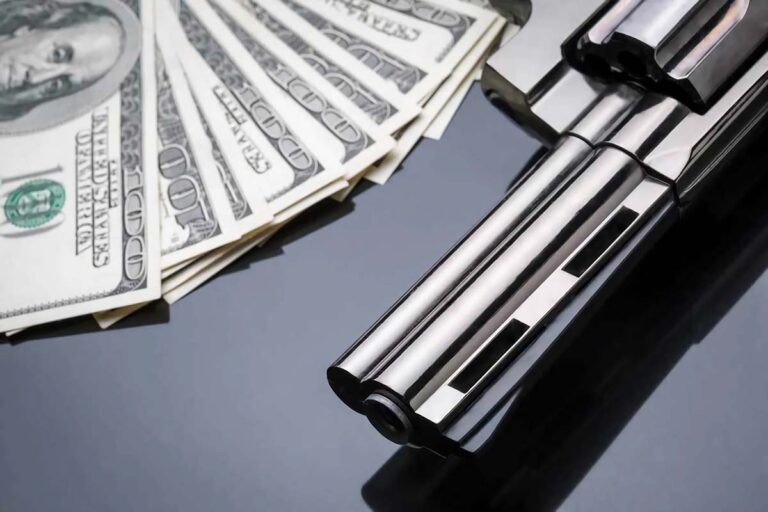
Need to move an old gun? We give you the tips and tricks to getting it sold on GunBroker.com.
Selling a gun—even one that doesn’t get your attention like it once did—is always a difficult deal. Aside from the money, the only positive in cashing in a piece of your steel 401K is it makes more room in your safe for more guns.
Finding yourself at this point, however, generally places a big question mark in your path: Exactly how should you sell your firearm? There is no shortage of avenues—some good, some not so good. But among the most established and well-known options at your disposal is GunBroker.com. Likely, if you’ve ever done some online window shopping, you’ve tripped upon the site and its vast array of guns.
In this article, we’re going to break down exactly what GunBroker.com is, how you can use it to move an old iron that doesn’t get shot the way it once did and some tips to get the best possible price for your merchandise. Ready to sell? Then let’s go!
What Is GunBroker.com?
Despite what your local anti-gunner or pearl-clutching politician might say, the website isn’t some unregulated gun bazaar or super-secret dark web denizen. Debunking their calculated hyperbolism, buying and selling firearms online is 100 percent legal, even for you—the average non-FFL American citizen. Yes, there is an FFL involved in online transactions, but you needn’t be Federally licensed to take part in the bustling online marketplace.
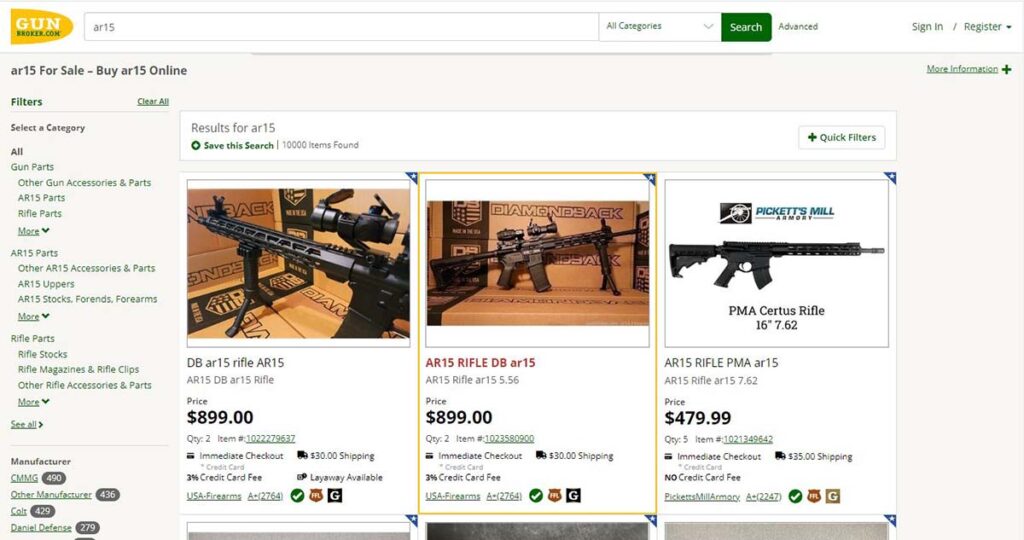
Now that’s cleared up, let’s focus on GunBroker.com properly, because there are some wrinkles with how the website works. While it’s loaded with firearms of every stripe, it is not itself a gun retailer. Nor is it an FFL. Instead, as alluded to a moment ago, it is a marketplace—simply a middleman connecting those who have guns to sell with those who have money to buy guns. Pretty simple.
This may raise the question, what does GunBroker.com get out of the whole deal? Like any business concern, it’s in it for the money, which it makes on transaction fees (we’ll touch more on this in a moment). After all, connecting you with someone willing to buy your gun is worth a little something—particularly if you live in Puckerbrush, Nev., and the buyer resides down in Bucksnort, Tenn.
Understand GunBroker.com’s Fee Structure
Since we touched upon it, one of the first things worth considering when planning to sell a gun on GunBroker.com is exactly what you’ll end up paying the site. The good news is joining the site and simply posting a gun for sale costs you nothing, the fees are only assessed after the sale is made. Outside of some particulars—we’ll touch on those below—the costs are fairly straightforward—a percentage of the total sale.
In GunBroker.com parlance, this is called a Final Value Fee. Where most folks get thrown for a loop is it’s a tiered structure. For the first $325 of a sale, the site charges a 6-percent fee. Every dollar above that amount is assessed at a 4-percent fee. Perhaps a quick example will clarify.
You sell a gun for $1,325. From this, $325 is assessed at 6 percent (or 325 x .06), while $1,000 is assessed at 4 percent (or 1,000 x .04). You’d calculate each rate, then add the two products, which in the case of the example would add up to $59.50. This is what you’d owe off your sale.
As mentioned, there are some particulars—addons if you will—GunBroker.com charges for sales. Some of these include boldface titles, showcase listings and reserve prices, to name a few. But fees on these only occur if you opt-in on using them, if you believe they’ll help your sale.
Pricing Your Firearm
Honestly, pricing may be the most difficult aspect of the whole rigmarole. If you ask too little, you’re leaving money on the table. Put the price too high and your gun will waste away, unbought and mocked by savvy gun buyers who know their stuff.
Perhaps the best thing to remember is, the value of your gun is what someone is willing to pay for it. Also, temper your expectations. Your gun has depreciated since you bought it, so you aren’t going to get what you originally paid. Sorry, that’s life.
There is, however, a way to hit the sweet spot in gun prices that will put the most money in your pocket, while moving your gun fairly quickly. This magic wand is research.
Doing Research
Gun Digest’s latest edition of the Standard Catalog of Firearms is a worthwhile starting place, especially if you’re dealing with rarer arms or models. But, GunBroker.com is a wealth of information in and of itself and can give you a solid idea of pricing for your particular firearms. All you have to do is search the existing listings.
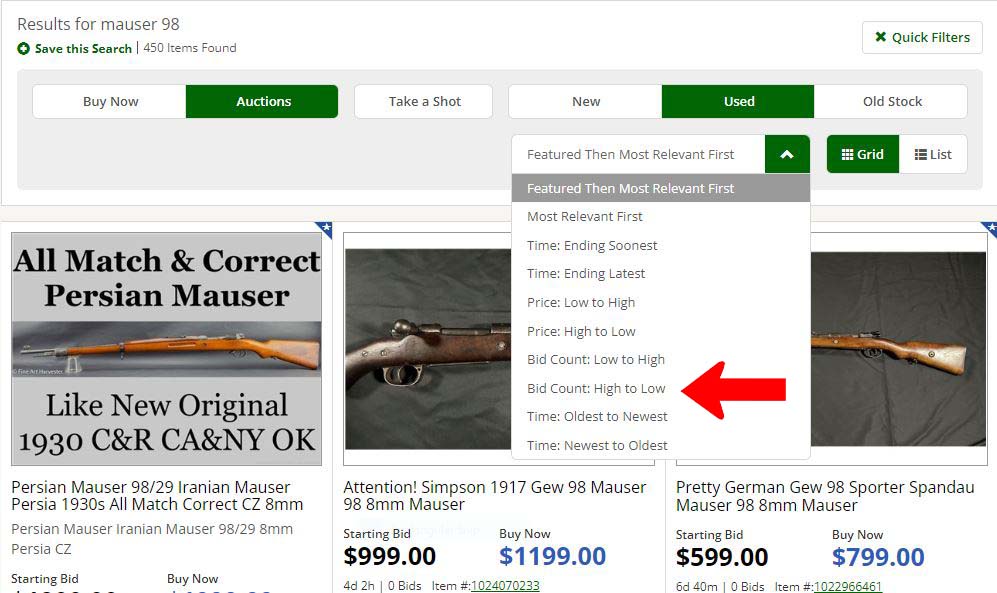
Unless you’re dealing with a very specific model of a firearm, general queries typically suffice. But you want to pay attention to a particular type of sale when researching—auctions. This even goes if you’re using the buy-now straight-up sale. Why auction? Because this type of sale produces—on average—the most realistic prices for a particular firearm at that moment and time.
To start, use the advanced search setting, enter your particular make/model, select auction, and then sort your results by highest bid volume. Doing this gives you the most active listings and likely the clearest picture of what the pricing is like on your particular gun.
From here, take your time and use your critical thinking skills. If a similar gun has an abnormal number of bids and an extremely high price, you’d likely want to consider it an outlier. Firearms with special features or customizations should also be omitted because they likely don’t accurately reflect what you’re selling. From there, you’re left with a good representational sample to work with.
Don’t just take those prices at face value, however. A solid strategy is to follow those auctions to see how they conclude and find out the final bid. This gives you a much clearer picture of what the market is willing to pay. This also raises another point, give yourself time to gather intelligence. You won’t do your best looking at guns one day and posting the next.
What Sort Of Sale?
How should you sell? That all depends on you and your risk tolerance. Penny auctions—ones starting at $0.01—generally finish with a higher final bid. But, boy, if your blood pressure is going to go through the roof waiting for that bid then this might not be the best route. Yes, you can set a reserve bid, but as mentioned GunBroker.com will charge you a fee for this—2 percent on the final sale.
For the more risk-averse, setting a sane starting bid—one you’re willing to accept if only one person bids—is a safer route. Likely you’ll achieve market price, but if you don’t you won’t drop tears in your beer.
Spelling Counts At GunBroker.com
Some long-time GunBroker.com patrons will grit their teeth when I spill the beans about spelling at the site. That is, folks have an entire strategy of querying make/model misspellings—particularly in auctions—because they’ll likely get a deal on the gun. This is a factor of the misspelling suppressing searches for the correct spelling. See, your fourth-grade teacher was right about not studying your spelling words coming back to bite you. Get someone to proofread before you make your sale live or you could walk away from your experience kicking yourself.
On the subject of writing, elaborate on the gun as much as possible in the description. If the stock’s finish is scratched, mention it. If it’s a unique chambering, make sure it’s in the copy. If you know the history of the gun—easy to find out online—throw that in. Buyers read this stuff and it makes for a richer product page, thus a more sellable product.
Get The Picture
We live in a visual world, particularly online. In turn, the pictures of the firearm you’re selling could prove to make or break in getting the gun moved. Even if you aren’t Ansel Adams, you should be as professional as possible in presenting your merchandise. No, that grip-and-grin of you, the gun your selling and the forky buck you took two years back isn’t going to cut it. Neither is a cell phone pic of it leaning in your closet next to a dirty pile of socks.
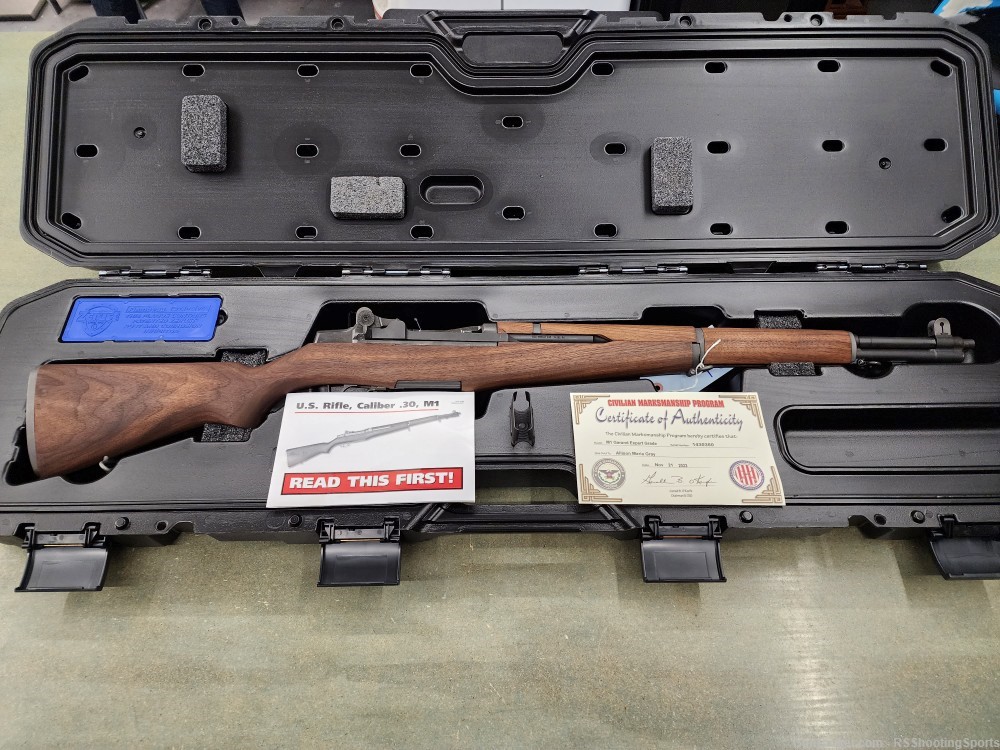
You want it to look as close to the pictures you see on gun retailer websites as possible, which boils down to clear and clean images. Here are some points to consider when photographing your gun:
- Background: Make sure it’s neutral, does not clutter the image or take away the details of the gun.
- Lighting: Have plenty of it, preferably not casting obscuring shadows. If possible, photographing outside on a clear day should provide the light you require.
- Focus: For God’s sake, make sure your pictures are in focus! Blurry pics of a gun-shaped object don’t close sales.
- Details: Take shots of your gun from every angle and focus on important features and extras.
There is a school of thought you should make the images interesting and kick a little flair into them. However, this may be dangerous ground. For every seller who might have an innate feel for composition, there are likely 10 who will junk up their pictures and hamper their sale doing so.
Overall, buyers will appreciate clean and clear over photographically eye-catching most times.
Parting Shot
Honestly, there are a ton of other tricks and tips to selling at GunBroker.com, but what was covered in this article should get you off on solid footing. Take your time, do your research, have realistic expectations and likely you’ll walk away from your sale satisfied and a bit richer.
More On Selling Guns:
Read the full article here

